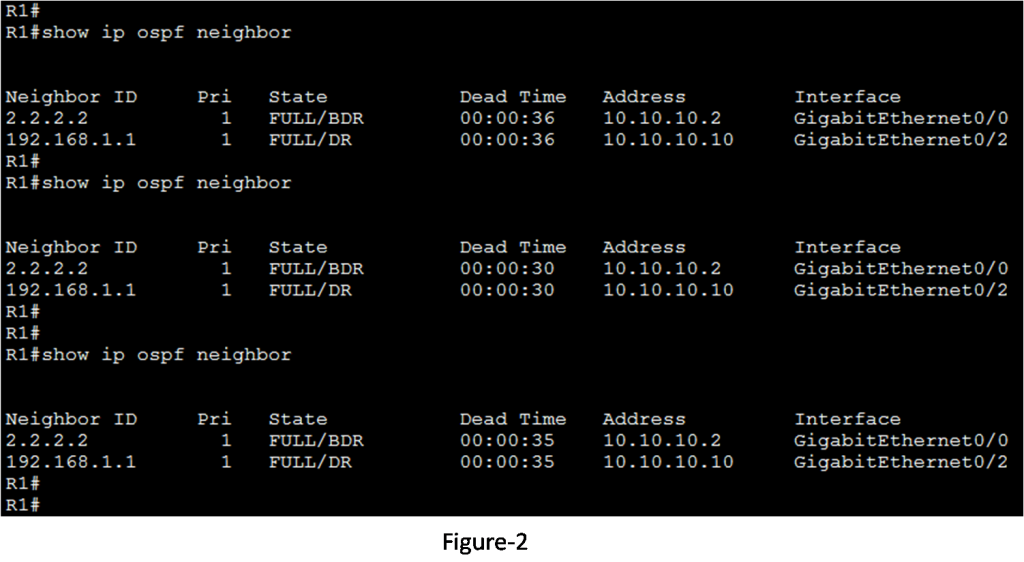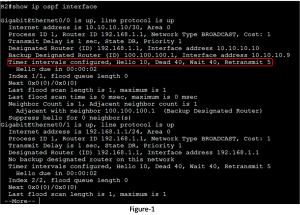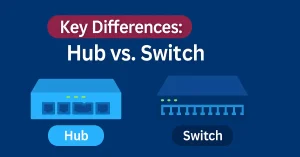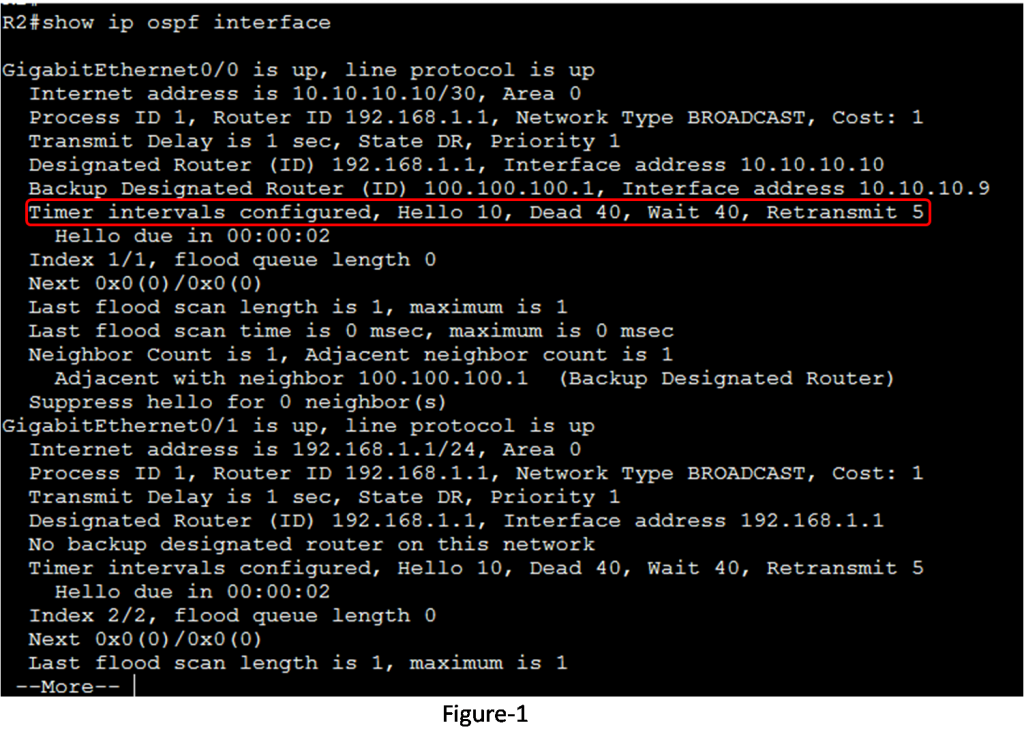
Devices enable OSPF to constantly track the status of their neighbors, sending and receiving hello packets. Hello, packets show whether each neighbour still is functioning, and sending and receiving link-state advertisement and acknowledgment packets. OSPF sends hello packets and expects to receive Hello packets at particular intervals. The Hello and Dead Intervals timer is included in the OSPF Hello messages.
- Hello Interval- The Hello Interval defines how often routing devices send the hello packet. The time is fixed on all interfaces, including virtual links, to establish and maintain neighbour relationships. The hello interval time is specified in seconds before the routing device sends a hello packet out of an interface. This hello-interval time must be the same on all routing devices. The default hello time is 10 seconds in broadcast and point-to-point networks and 30 seconds in nonbroadcast multiple access (NBMA) networks.
- Dead Interval- Dead interval defines how long we should wait for hello packets before we declare the neighbour dead and out of reach. If an OSPF enabled device does not receive a hello packet from a neighbour within a fixed time, the routing device changes its topology database showing that the neighbour is nonoperational. The dead time is specified in seconds. The router waits according to the dead Interval timer before declaring the device non-operational and unavailable. The Dead Interval timer must be the same on all routing devices on a shared network. By default, Dead Interval is four times the default hello interval.
The OSPF Hello and Dead intervals are configurable per interface. As shown in Figure 1, we can check the current configured value using the “show ip ospf interface” command. The GigabitEthernet 0/0 Hello and Dead intervals are set to the default 10 seconds and 40 seconds.
In Figure 2, the “show ip ospf neighbor” command is used on R1 to verify that R1 is adjacent to R2 and R3. The command is used subsequently several times. Notice that the output of the command illustrates that the dead time is counting down from 40 seconds. By default, this value is refreshed every 10 seconds when R1 receives a Hello from the neighbours.
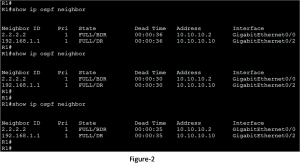
Modifying OSPFv2 Intervals
Sometimes, we need to change the default Hello and Dead Intervals so that routers identify network failures in less time. Less timers increase traffic, but it reduces the convergence time. The default timer is prepared for most of the network because it is based on best practices and should only be altered in rare situations. The Hello and Dead Intervals are configurable values in interface configuration modes.
- ip ospf hello-interval <seconds>
- ip ospf dead-interval <seconds>
We can reset the Hello Interval and Dead Intervals to their default values using the “no ip ospf hello-interval” and “no ip ospf dead-interval” commands.
If we change the Hello interval to 5 seconds, immediately after changing the Hello interval, the Cisco IOS automatically changes the Dead interval to four times the Hello interval. However, it is not a good practice; it is always good to modify the timer manually. It is also important to modify the Hello and Dead Intervals on all adjacent routers because if alter one side of the OSPF link, when the Dead Timer expires on that router, it will lose the adjacency. The reason is that the values have only been changed on one side of the OSPF link. Therefore, the OSPF Hello and Dead intervals must match between neighbors.
Modifying OSPFv3 Intervals
We can also modify and change the OSPFv3 intervals just like OSPFv2. We can modify the Hello and Dead Interval using the following interface configuration mode command.
- ipv6 ospf hello-interval seconds
- ipv6 ospf dead-interval seconds
Similarly to OSPFv2, we can restore the interval values to their default using the “no ipv6 ospf hello-interval” and “no ipv6 ospf dead-interval” commands.
Similar to OSPFv2, if the OSPFv3 Hello Interval is changed to 5 seconds, Immediately after changing the Hello interval, the Cisco IOs automatically modify the Dead interval to four times the Hello interval. However, changing the dead interval manually to 20 seconds is also required. We can verify using the “show ipv6 ospf neighbor command. The show ipv6 ospf interface command can also verify the Hello and Dead Intervals.

